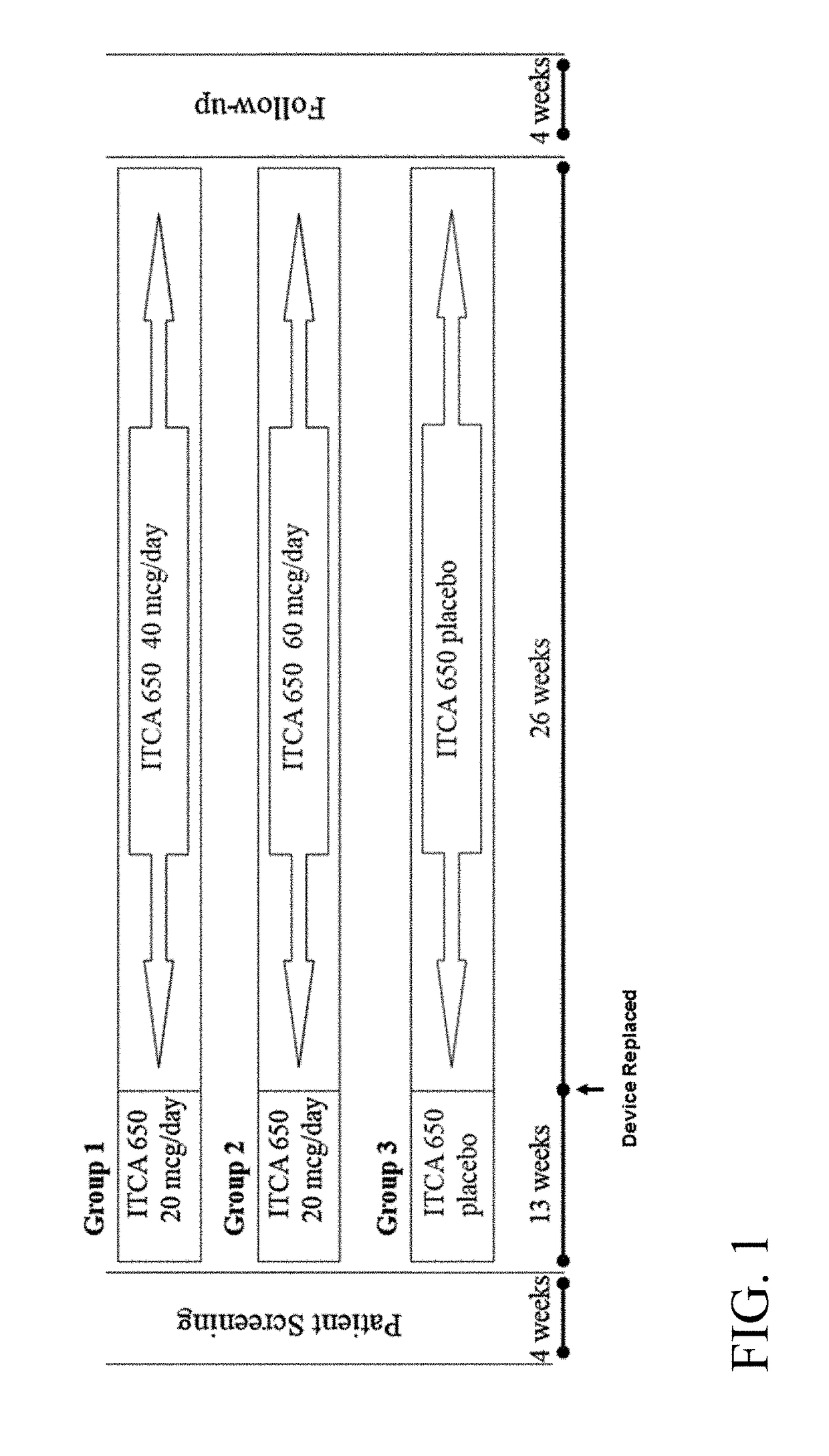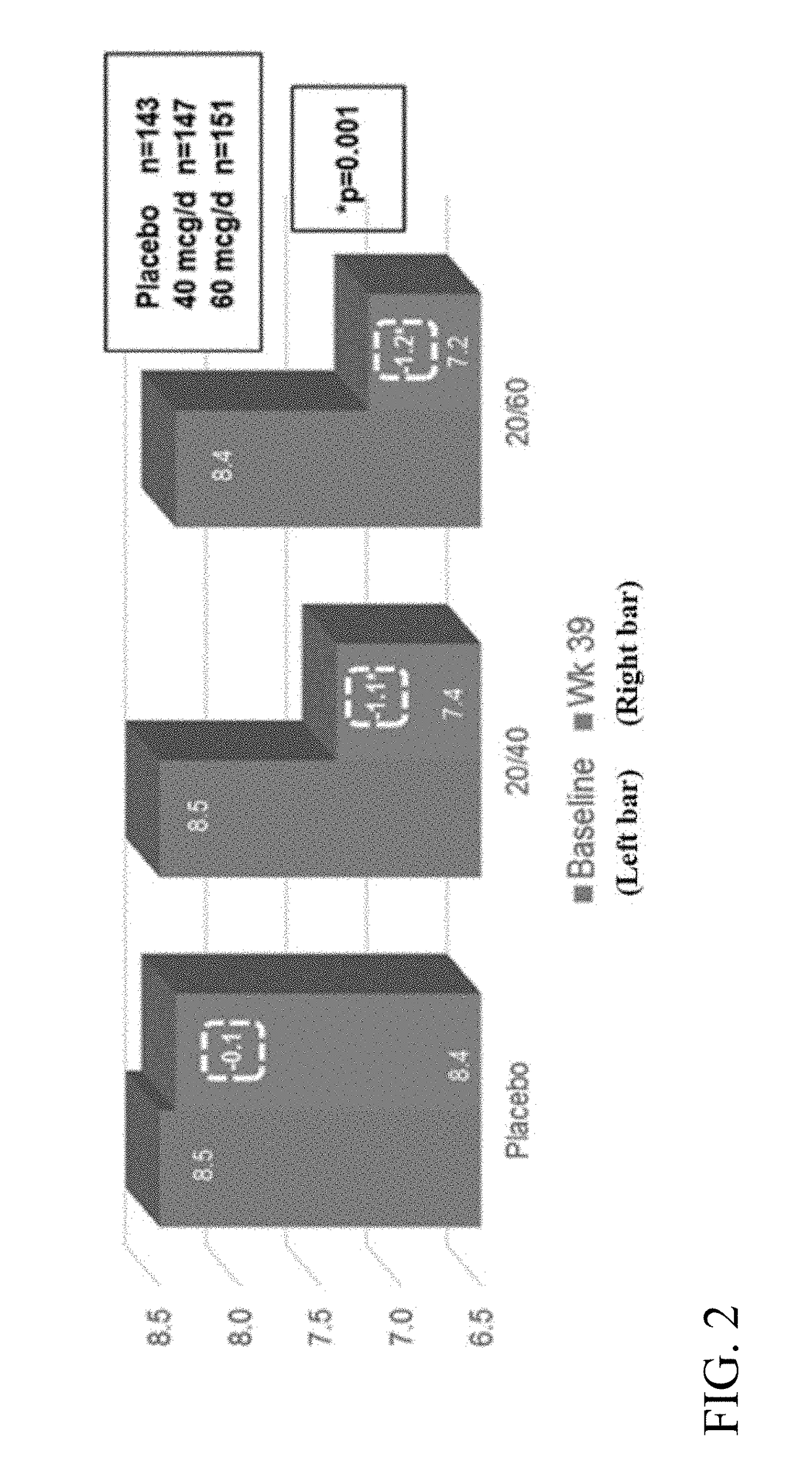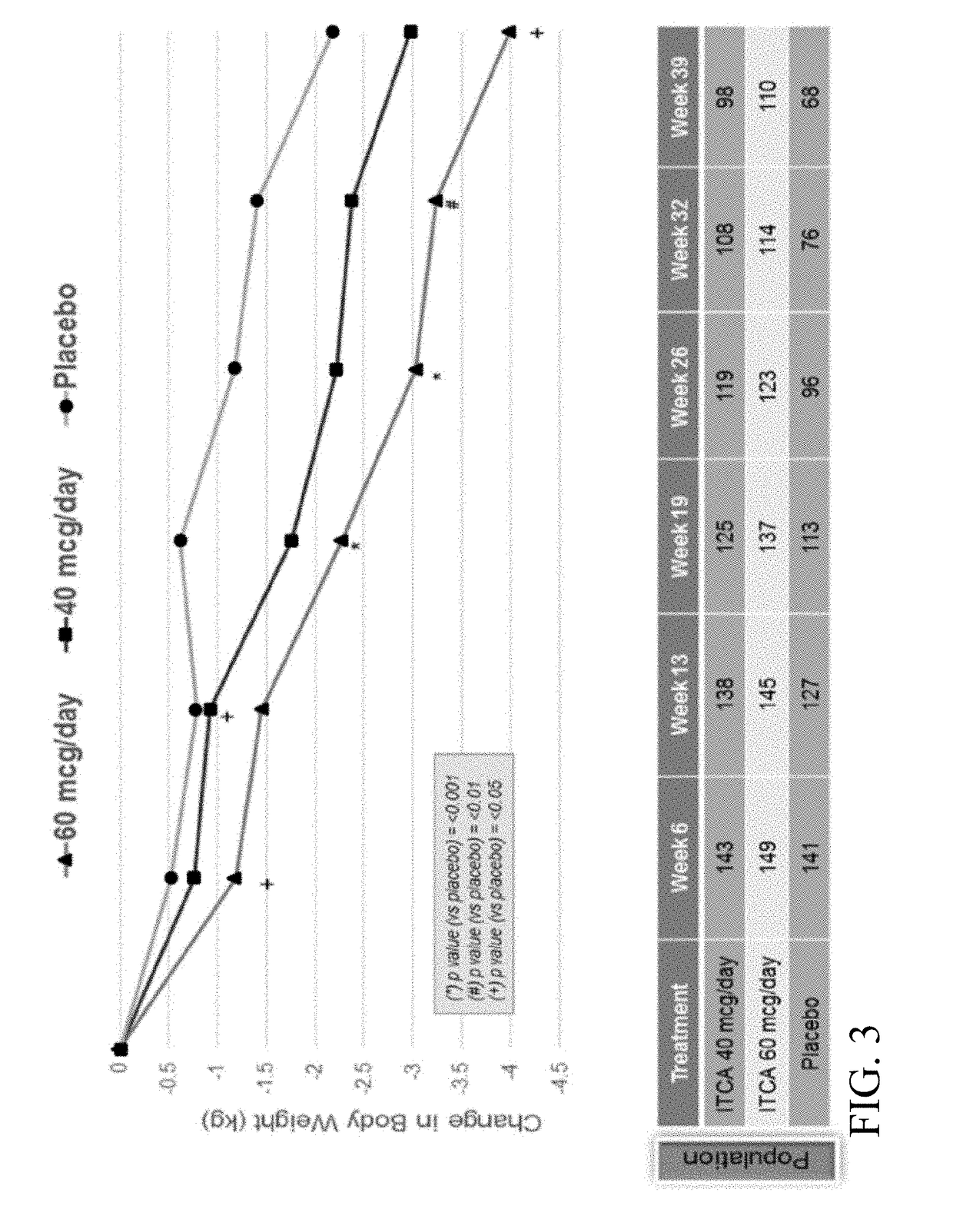THERAPEUTIC METHODS FOR THE TREATMENT OF DIABETES AND RELATED CONDITIONS FOR PATIENTS WITH HIGH BASELINE HbA1c
a technology applied in the field of therapeutic methods for diabetes and related conditions of patients with high baseline hba1c, can solve the problems of variable 24 hour plasma drug exposure, difficult administration of intravenous injections, and increased risk of chronic hyperglycemia
- Summary
- Abstract
- Description
- Claims
- Application Information
AI Technical Summary
Benefits of technology
Problems solved by technology
Method used
Image
Examples
example 1
A Phase 3, Randomized, Double-Blind, Placebo-Controlled, Multi-Center Study to Evaluate the Efficacy, Safety and Tolerability of ITCA 650 in Patients with Type 2 Diabetes
[0343]A Phase 3 clinical trial was designed as a double-blind, placebo-controlled multi-center study to determine whether ITCA 650 60 μg / day or 40 μg / day is superior to ITCA placebo reducing HbA1c in patients with type 2 diabetes following 39 weeks of treatment.
[0344]Efficacy and safety of ITCA 650 versus ITCA placebo was studied during a 39-week treatment period. The study device (ITCA 650 or ITCA placebo) was placed on day 0, replaced at week 13 and removed at week 39. Group 1 was initially treated with an ITCA 650 20 μg / day device for 13 weeks. After 13 weeks, the ITCA 650 20 μg / day device was replaced with an ITCA 650 40 μg / day device for 26 weeks. At week 39 the ITCA 650 40 μg / day device was removed. This dosage scheme and members of this group are hereinafter in this Example referred to as ITCA 650 20 / 40 μg / da...
example 2
A Phase 3 Clinical Trial Data for Continuous Delivery of Exenatide for Subjects with Type 2 Diabetes having High Baseline HbA1c
[0379]A Phase 3 clinical trial was designed as an open-label, multi-center sub-study to evaluate the efficacy, safety, and tolerability of continuous delivery of a synthetic exenatide via a subcutaneously implanted osmotic delivery device in type 2 diabetes subjects with high baseline HbA1c (i.e., serum HbA1c levels >10.0% and ≤12.0%).
[0380]Initially, subjects are treated for 39-weeks. Subjects were subcutaneously implanted with a three month ITCA 650 osmotic delivery device delivering an exenatide dose of 20 μg / day, which was replaced after thirteen weeks with a six month ITCA 650 osmotic delivery device delivering an exenatide dose of 60 μg / day; the initial phase of the study includes 39 weeks of treatment. After 39 weeks of treatment, the ITCA 650 60 μg / day device was removed. This dosage scheme and members of this group are hereinafter in this Example re...
PUM
| Property | Measurement | Unit |
|---|---|---|
| time | aaaaa | aaaaa |
| viscosity | aaaaa | aaaaa |
| viscosity | aaaaa | aaaaa |
Abstract
Description
Claims
Application Information
 Login to View More
Login to View More - R&D
- Intellectual Property
- Life Sciences
- Materials
- Tech Scout
- Unparalleled Data Quality
- Higher Quality Content
- 60% Fewer Hallucinations
Browse by: Latest US Patents, China's latest patents, Technical Efficacy Thesaurus, Application Domain, Technology Topic, Popular Technical Reports.
© 2025 PatSnap. All rights reserved.Legal|Privacy policy|Modern Slavery Act Transparency Statement|Sitemap|About US| Contact US: help@patsnap.com



